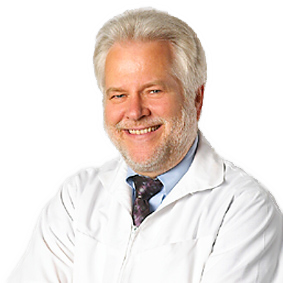Did You Know…a South America tree contains a key cancer-fighting compound?
The Sangre de Drago tree (Croton lechleri) is a tall, narrow tree that grows primarily in the Upper Amazon region of Peru, Ecuador, and Colombia.
Known sometimes as Sangre de Grado or Sangre de Dragon, the tree is named in reference to “dragon’s blood”. This is due to the dark red resin that appears when the bark is sliced open. The sap of the Sangre de Drago–along with its bark–is used by indigenous people to accomplish a variety of healing functions, including…
• To stop bleeding and seal and protect injuries
• Healing stomach ulcers and hemorrhoids
• Treating inflamed or infected gums
• Relieving fevers and infections
Western researchers have confirmed many folk accounts of Sangre de Drago’s curative powers. 
And now, scientists believe that the sap could have a potent effect on cancer. Preliminary studies indicate that this remarkable sap can actually kill cancer cells.
It Takes a Dragon to Slay Cancer
Sangre de Drago has 3 especially exciting cancer-slaying capacities: it can kill cancer cells…prevent tumor growth…and stop cell mutation.
In 2002, the Journal of Ethnopharmacology published a study conducted at Albany Medical College. The researchers there found that Sangre de Drago could induce “apoptosis,” or cell death.
Apoptosis is extremely valuable for potential cancer treatments, because tumor cells resist apoptosis and therefore live beyond what should be their programmed cell death. In this way, tumor cells can continue to multiply and invade the body.
The ability of tumor cells to resist apoptosis also plays a significant role in the way malignant cells become immune to certain cancer treatments.
Because of this and other impressive effects, the Albany research team recommended that Sangre de Drago be “evaluated further as a…source of anti-cancer agents“. More research into Sangre de Drago’s cancer-killing abilities is sure to be forthcoming!
The Tree that Cures All?
While cancer treatment research continues with Sangre de Drago, many natural health practitioners are already using this remarkable substance to treat a number of health conditions.
Dr. J.E. Williams, an international medical expert, is an enthusiastic fan of Sangre de Drago as a medicinal. He says the sap can combat the dangerous effects of diarrhea induced by prescription drugs, chemotherapy, radiation, microbial infections, travel-related exposure, viruses, and even AIDS.
“In addition,” he says, “the antimicrobial and anti-inflammatory effects…make it a useful compound in the clinical treatment of chronic viral diseases and as a natural antibiotic agent.”
Diabetics may also have reason to celebrate this ancient remedy. Some health practitioners in the United States have recently had success in using Sangre de Drago internally to treat diabetic neuropathy–damage to nerves in the body as a result of high blood sugar levels from diabetes.
Sangre de Drago has been found to have a strong beneficial effect on nerve endings, nerve pain, and nerve inflammation.
Sangre de Drago is also used as an antiviral, antifungal, and antiseptic topical treatment for skin. Not only does the plant stop bleeding, it’s also a potent healer for:
- Cuts
- Scrapes
- Bites
- Stings
- Rashes
- Skin and nail fungus
Professionals have reported that Sangre de Drago can heal skin ulcers and sores that were otherwise untreatable.
Best of all, the most serious side effect is totally harmless–just a minor staining from the plant’s red resin.
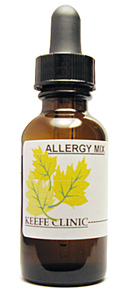
TO ORDER CALL 918-663-1111
Many Americans, at different seasons of the year, are plagued by symptoms of runny noses, watery eyes, congested glands, persistent coughs, and recurring upper respiratory infections, all due to allergic reactions. Allergies can be simply defined as the body’s inappropriate response to certain substances, usually proteins (antigens). These proteins can be ragweed, grass pollens, any plant substance found in the air, a particular food or a chemical that is ingested or inhaled. These antigens can cause immune system responses, classically the congested, runny noses, watery eyes, congested sinuses and lungs; but allergic responses can also include depression, asthma, joint pain, diarrhea, constipation, and many other symptoms.

CLICK TO ORDER
We call these responses inappropriate because everyone will breathe in the ragweed or grass pollen, or eat certain foods, but only a certain percentage of the population will have reactions to these as antigens. These reactions thus represent an inappropriate response to common substances. In other words, the body interprets these common substances as invading organisms, and the immune system mounts a response as if it was being attacked. However, the particular antigens usually do not cause any tissue damage under normal circumstances. In fact, the damages (or symptoms that are produced within the body) are usually due to the body’s inappropriate immune system response to the substance.
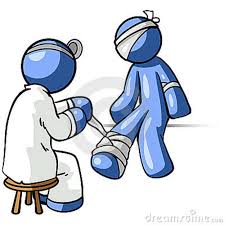
CLICK TO ORDER
It is this inappropriate response that needs to be treated - and not just the symptoms of the allergies. The standard medical approach to allergies is to suppress the symptoms with dangerous antihistamines, cortisone preparations, and other medications that are designed only to repress the body’s responses. This method is one that I term a “COVER-UP” method. It does not help a patient with his or her allergies; it only artificially covers up the symptoms of these allergies. The question that needs to be asked is, “Why do these people have inappropriate allergy responses?"

CLICK TO ORDER

CALL KEEFE CLINIC 918-663-1111
The answer to this is: the nervous system has an imbalance in the way it responds to certain proteins or other substances, and it is that response that must be corrected, not suppressed.
Below listed is the protocol which we have developed through trial and error over the years and with which we are currently enjoying great success at Keefe Clinic.
First of all, we understand that it is not the ragweed or any other antigen that is the problem, but it is the body’s response to it that is the problem. Therefore, we look to the nervous system as the root cause, because the imbalance is within the nervous system, which then causes the abnormal reaction.

TO ORDER CALL 918-663-1111
1) The first area of treatment is that of homeopathy. Homeopathy is a system based on the principle of “like cures like”. In the case of the allergies, the substance that would be used would be the antigen (the pollen, ragweed, food, etc) that produces the improper symptoms. This antigen is diluted several times to form a product that will help the body adjust its inappropriate reaction to become an appropriate reaction. By giving this antigen in a diluted fashion, and by diluting it enough that it will not produce an allergy reaction by itself, a slight response is produced that will gradually desensitize the body to the offending substance.

CLICK TO ORDER
For instance, if you have an allergy to ragweed pollen, when you breathe it in, your immune system begins to fight the ragweed as if it was an invading bacteria or virus. Thus, we would take ragweed pollen and dilute it down to a level where it will not cause that same immune response - indeed, at this level, it has been found that it will produce an opposite response. In other words, it will re-calibrate the body in such a way that it will not react to this pollen as a foreign invader. Over a period of time, by ingesting diluted antigens, the body will build up a resistance to this inappropriate response (allergic reaction). This strengthening of the body can lead to a permanent cure for this allergy. The homeopathic treatment program is similar to the allergy injection program practiced in the United States.

CLICK TO ORDER
In fact, when an allergist gives an injection of diluted pollens, he is practicing a crude form of homeopathy. We say "crude" because the homeopathic physicians developed this technique in Europe over a hundred years ago, and they used very precise dilutions. We are very happy to be able to offer homeopathic Allergy Mixes in our office which can be customized to your particular allergies- especially because we feel this is quite superior to the often painful injection process used by medical allergists.
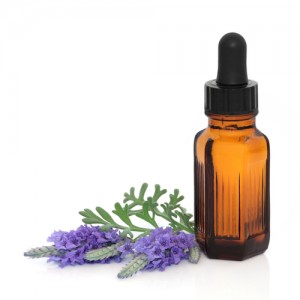
CLICK TO ORDER
Allergy mixes are liquids given by mouth in small doses on a regular basis - easily administered even to very small children. These custom-made mixes represent the antigens (environmental, in foods, and chemicals) to which you might be sensitive. These particular products sometimes require changing in potency in order to effect a permanent cure. Most people start out using a 6x potency, and most will develop a permanent cure with that potency alone. But some patients require the changing of potencies as they progress through the treatment program. The potency can go from a 6x dilution all the way up to a 500x dilution, or higher, before some are desensitized totally to a particular antigen. Thus it is essential that a patient keep us informed on how he or she is responding to the treatment program in order for the allergy mix to be adjusted as needed.
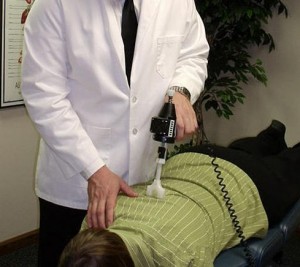
CLICK TO ORDER
2) The next approach in allergy work that we use is re-establishing a normal function of the nervous system in regard to these antigens. For this we utilize Chiropractic care. Chiropractic, of course, helps relieve nerve pressure and establishes normal nerve functioning within the body. Vertebra can lose their normal position and crowd the nerve root causing disruption of the normal control over the body. Many disease processes have their start from subluxation complexes that were neglected because there was no pain and the person did not have his or her spine checked for problems. Chiropractic adjustments are safe and effective for many of the most common health problems that we suffer.

CLICK TO ORDER
3) It has also been found that particular antigens will disrupt certain electrical-type circuits within the body. In acupuncture, these circuits are called meridians. Several points which show less resistance to electrical current are found along the meridians, and these points can be mapped out by use of electronic machines that register skin resistance in the body. It has been found that there are twelve meridians that are found on both sides of the body, as well as two meridians that are found along the center of the body, both in the front and in the back. These meridians are associated with certain functions, organs, muscles and parts of the body. Each meridian has a particular name, e.g., the kidney meridian (associated with certain parts of the body, including the kidneys). There is a liver meridian, a heart meridian, etc. These meridians are electrical circuits that tend to be associated with these key organs and muscles. It is found that certain antigens will disrupt these electrical circuits in the body and produce the allergy response. Through the acupuncture-allergy technique, we determine which circuits are disrupted by a particular antigen, and then by a proper stimulation of the key points within the meridian, as a particular antigen is being held or placed on the body, we cause the nervous system to re-adjust how it responds to that antigen. In a few cases, this can produce almost instantaneous reversal of the allergy response in the body.
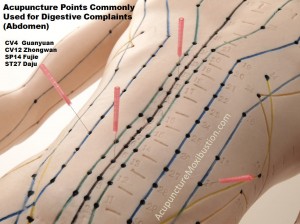
CLICK TO ORDER
This is a new technique, and promises to be a very effective way of re-programming the nervous system in its inappropriate response to antigens. This treatment program can vary as to number of treatments required to produce a permanent cure, but a number of patients will respond within 1-6 treatments when we are dealing with a particular antigen. Depending on the number of antigens with which we have to deal, we can schedule allergy acupuncture treatment sessions for each substance, as we determine the number of sessions we will have to do to develop a long-term cure for your allergies.

CLICK TO ORDER
4) Nutritional therapy is another important part of an over-all program. Weak organs are involved in allowing the body to have an allergic reaction. Giving nutritional support to these weak organs will help a patient recover his health, and allow him to end the cycle of the chronic allergy sufferer who normally has episode after episode of allergy symptoms. Through the use of properly selected products, the allergic system can be returned to normal function. Remember: allergies do not represent a normally functioning body. Proper nutrition can be an effective tool in returning the body back to health in most health care problems.

CLICK TO ORDER
It is important to realize that the treatments I have outlined here are not done for the purpose of suppressing symptoms; they are not done to cover up your body’s response to the antigens. They are done to re-adjust the body’s reaction to antigens back to normal. These techniques are designed to develop a CURE.

Not all allergies will respond as quickly in some patients as they do in others. During the treatment program, symptom relief can be an important part of the overall treatment along with the corrective process. However, instead of utilizing strong, potent, and dangerous drugs to help relieve symptoms, we offer natural, herbal preparations and other natural products that can produce the same symptomatic relief without the negative drug effect that is seen in most over-the-counter and prescription medications used for allergies. Thus, we do not overlook that need for symptom relief; however, our goal is to correct the allergic response, not just to suppress it.

We believe that each person is unique and that each patient's program must be individualized. Not all the techniques we have spelled out will be used with each patient. After a complete exam and history is taken, we will work out a treatment program that will be specifically designed for each patient's particular needs.

For your sake, if you or someone you know suffer from allergies, seek a safe, effective solution to your problem; don’t just cover up the symptoms. Seek a natural solution to all of your health problems.
Give the Natural Approach to allergies a try! Schedule an appointment at Keefe Clinic for Allergy Testing. You may call 918/663-1111 to schedule. VISIT: www.facebook.com/KeefeClinic
Courtesy of:
John H. Keefe III, D.C.
(918) 663-1111

CLICK HERE
WELLNESS/PREVENTION: Vaccination detoxification - How to remove heavy metals and other vaccine toxins. Vaccine ingredients (adjuvants and preservatives) and substances used in the manufacturing process, including vaccine-production media that are present only in trace quantities, include: sucrose, fructose, dextrose, potassium phosphate, FD&C Yellow #6, aluminum lake dye, fetal bovine serum, sodium bicarbonate, monosodium glutamate, aluminum hydroxide, benzethonium chloride, lactose, aluminum potassium sulfate, peptone, bovine extract, thimerosal(mercury), ammonium sulfate, formaldehyde, glutaraldehyde, bovine extract), calf serum, aluminum phosphate, aluminum hydroxphosphate sulfate, and ethanol. Drink Lots of fluids, exercise, and Hot & Cold Hydrotherapy. Most vegetables have some chelation properties, and eating combinations of vegetables increases their ability to chelate exponentially (this is true for all the health benefits).
Cranberry stevia lemonade, exercising, and hot & cold hydrotherapy can also be a huge help with detoxifying the body.
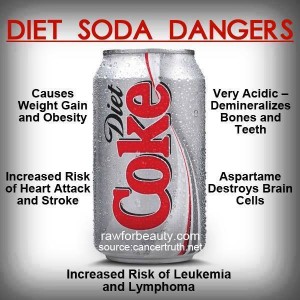
CLICK HERE
IN THE NEWS: US Soda Makers Pledge 20 Percent Calorie Cut by 2025 The American Beverage Association (ABA) announced that it will cut the number of calories consumed from sugary drinks by 20 percent in the US over the next 10 years ABA intends to achieve its goal of reduced soda calories, in part, by offering more zero or low-calorie drinks, but diet sodas are just as dangerous to your health (and perhaps more so) than regular soda. Rather than educate consumers about the real health risks of soda, the industry has taken on a different marketing ploy by introducing smaller “guilt-free” sizes. Soda consumption is linked to obesity, diabetes, heart disease, kidney disease, liver damage, osteoporosis, acid reflux, and more.

CLICK HERE
CONDITION OF THE WEEK: JOINT PAIN- pain in the joints can happen for multiple reasons. The joints could be out of place and need to be re-aligned. The joints could be losing essential minerals and in need of nutrition to correct. The joint pain could reflect the general inflammation of the body which requires an overall dietary approach to correct. No matter what the cause of your joint pain we can help. Covering up the pain with drugs is not only dangerous but counterproductive. The joint problem will just get worse even if the drugs help with the symptoms. Find the problem and fix the problem.

CLICK HERE
FUNNY BONE: A woman gets on a bus with her baby. The bus driver says, "That's the ugliest baby that I've ever seen. Ugh!" The woman goes to the rear of the bus and sits down, fuming. She says to a man next to her, "The driver just insulted me!" The man says, "You go right up there and tell him off – go ahead, I'll hold your monkey for you."
American Chiropractic Association (ACA) has announced a national health care observance
National Chiropractic Month
DO YOU KNOW SOMEONE WITH A HEALTH PROBLEM OR IN PAIN?
INVITE YOUR FAMILY OR FRIENDS TO THE PARTY
Who do you know who is hurting? Who do you know that you have been trying to get started at Keefe Clinic?
Now is the time to get your spouse, or child started on the road to good health.
Complimentary
DIAGNOSTIC WORK UP DURING OCTOBER
If they say you referred them and ask for the Oct. special they will get a
Complimentary initial exam and one X-ray.
Tell someone today
Visit our web site: keefeclinic.com&facebook.com/keefeclinic

click pic
Everyone knows about the flu and the flu vaccine. What people do not know is that flu vaccines are nearly useless in preventing flu, they will cause the flu, and they often result in nervous system damage that can take years for the body to repair. Other nations chuckle at Americans' infatuation with the flu vaccine. The joke would indeed be funny, if it weren't for the damaging effects caused by the vaccine.

click pic
The history of the flu vaccine reads like one stumbling fiasco after another. Take an example. Ever wonder how the particular viruses are chosen for next year's vaccine? The answer could be drawn from a 1930s film noir of Shanghai villainy. Scientists kill migrating ducks in Asia, culture the viruses and put those in next year's vaccine, because they have seen an association between bird and pig viruses and the following year's human flu epidemics. Perhaps this desperate guesswork is responsible for so many years when the flu vaccine's viruses had nothing in common with circulating viruses. According to a CDC report of the 1994-1995 flu season, 87 percent of type A influenza virus samples were not similar to the year's vaccine, and 76 percent of type B virus were not similar to the virus in that year's vaccine. During the 1992-1993 season, 84 percent of samples for the predominant type A virus were not similar to the virus in the vaccine.
Here is a list of the most common side effects of the flu vaccine as stated by the CDC - fever, fatigue, muscle aches, and headache. Sound familiar?
The primary targeted population for flu vaccine is the elderly, yet the vaccine is notoriously ineffective in preventing disease in that population. According to the CDC, the effectiveness of flu vaccine in preventing illness among elderly persons residing in nursing homes is 30-40 percent (CDC, 2001b). Other studies have shown an even lower efficacy of 0-36 percent (averaging 21 percent). The CDC proudly notes that for those elderly persons living outside of nursing homes, flu vaccine is 30-70 percent effective in preventing hospitalization for pneumonia and influenza. Yet the Department of Human and Health Services found that, with or without a flu shot, pneumonia and influenza hospitalization rates for the elderly are less than one percent during the influenza season. Regardless of vaccination status, 99 percent of the elderly recover from the flu without being hospitalized. The ineffectiveness of flu shots in the elderly led the CDC in 2000 to begin recommending the shots for all persons age 50 years and older. The rationale being that one third of Americans have a risk factor or chronic disease that puts them at risk of increased morbidity from the flu.
Annual flu vaccination is recommended for those individuals with asthma and other chronic respiratory and cardiovascular disorders. However, those people with impaired immune systems are the most likely to suffer adverse autoimmune reactions.

click pic
Children are the next frontier for the lucrative flu vaccine campaign. Vaccination is currently recommended for children over six months of age with high-risk medical conditions, but is not recommended for healthy children. Experts in the field suggest that parents of children age six months to two years "be informed that their children are at risk for serious complications of influenza, and allowed to make individual informed decisions regarding influenza immunization for their children" (Neuzil et al., 2001). This statement was made by Marie Griffin (and others), the same author who was implicated in the flawed study that supposedly exonerated the pertussis vaccine of nervous system damage. She is also a paid consultant to one of the world's largest vaccine manufacturers, Burroughs Wellcome. The children's market is the next big hope for vaccine campaigners. A 1998 working group began investigations to not only support, but also to "recommend" flu vaccine for young children. Research in the Journal of Virology found that the seasonal flu vaccine may weaken children's immune systems and increase their chances of getting sick from influenza viruses not included in the vaccine.
Research in the Journal of Virology found that the seasonal flu vaccine may weaken children's immune systems and increase their chances of getting sick from influenza viruses not included in the vaccine.
The next big change in flu vaccines is the introduction of a live intranasal flu vaccine, a dose that is actually sprayed into the nose. This vaccine has already been tested on young children. Live intranasal vaccine was found 93 percent effective in preventing influenza in children age one to six years old (Belshe et al., 1998). Unanswered questions about the live vaccine include the possibility of transmitting other, more dangerous viruses through the vaccine, the possibility of enhanced replication of the attenuated virus in individuals with compromised immune systems, and the possibility of bacterial superinfection if the replicating live virus disrupts nasal membranes (Subbarao, 2000). This vaccine waits in the wings for its chance as the next big gun in the vaccine arsenal aimed at our children.
Guillain-Barré Syndrome
In 1976 the flu vaccine was dealt a near fatal blow when reports appeared that the vaccine caused Guillain-Barré syndrome (GBS), an autoimmune nervous system reaction characterized by unstable gait, loss of sensation, and loss of muscle control. A mass vaccination program was mounted that year by the US Government, and 45 million Americans received the swine flu vaccine. Statistical studies have confirmed a causal relationship between the vaccine and GBS. During that year the rate of GBS in Ohio was 13.3 per 1,000,000 in vaccine recipients compared to 2.6 per 1,000,000 in nonrecipients (Marks & Halpin, 1980). A follow-up study also showed a significantly increased incidence of GBS during the first 6 weeks following receipt of the vaccine in patients residing in two other states. The rate of GBS was 8.6 per million vaccinees in Michigan and 9.7 per million vaccinees in Minnesota (Safranek et al., 1991). This episode, which became known as the swine flu catastrophe, left doctors extremely reluctant to administer flu vaccine, and shattered the public trust in the flu vaccine campaign.
The association between GBS and flu shots was not unique to the swine flu. Earlier reports had also summarized cases of nervous system disorders occurring soon after the flu vaccine (Flewett & Hoult, 1958; Horner, 1958). More recently, an increased risk for GBS occurring in patients during the six weeks following the flu vaccine was revealed in the 1992-1993 and the 1993-1994 flu seasons (Lasky et al., 1998).

click pic
Pregnancy
One of the most bizarre twists on the flu vaccine saga is the CDC recommendation of 2001 that all pregnant women receive the vaccine in their second or third trimester. This recommendation even has doctors confused, since the vaccine remains a category C drug (unknown risk for pregnancy). No adequate studies have been conducted to monitor safety of the vaccine for mother and fetus. The only studies of adverse effects in pregnancy were conducted in the 1970s (Heinonen et al., 1973; Sumaya & Gibbs, 1979). Some flu vaccines still contain mercury as a preservative, despite a 1998 FDA instruction to remove mercury from all drugs. According to the CDC, two groups are most vulnerable to methylmercury¾the fetus and children ages 14 and younger. An article published in the American Journal of Epidemiology in 1999 stated, "the greatest susceptibility to methylmercury neurotoxicity occurs during late gestation" (Grandjean et al., 1999). How did CDC committee members determine that flu vaccines were safe for pregnant women? They did not. The committee, despite its own recommendation, states, "additional data are needed to confirm the safety of vaccination during pregnancy" (CDC, 2001b).
ACCORDING TO HUGH FUDENBURG, MD - the world's leading immunogenetisit and 13th most quoted biologist of our time (nearly 850 papers in peer review journals) - If an individual has had 5 consecutive flu shots between 1970 - 1980 (the years of the study) his/her chance of developing Alzheimer's Disease is 10 times greater than if they had 1, two or no shots. When asked why, Dr. Fudenberg stated that it is due to the mercury and aluminum buildup that is in EVERY flu shot (and in almost all childhood shots). The gradual mercury and aluminum buildup in the brain causes cognitive dysfunction. ALZHEIMERS is now expected to QUADRUPLE.
Dr. Fudenberg's comments are from his speech at the NVIC International Vaccine Conference, Arlington VA September, 1997. Alzheimers to quadruple statement is from the John's Hopkins Newsletter of November 1998.
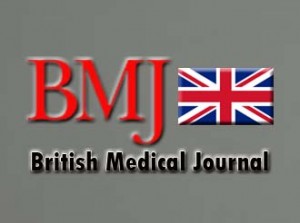
BMJ News
Belief not science is behind flu jab promotion, new report says
BMJ 2012; 345 doi: http://dx.doi.org/10.1136/bmj.e7856 (Published 19 November 2012)
Cite this as: BMJ 2012;345:e7856
Jeanne Lenzer Author Affiliations 1 New York
An independent meta-analysis of vaccines against influenza has found that claims of benefit have been significantly exaggerated.
The report, released last month by the University of Minnesota’s Center for Infectious Disease Research and Policy, was based on a comprehensive review of data published from 1967 to 2012.1
Evidence for “consistent high-level protection is elusive,” the researchers concluded. Although vaccination was found to provide modest protection from infection in young healthy adults who rarely have complications of flu, the authors found that “evidence for protection in adults 65 years of age and older [who represent over 90% of deaths from flu] . . . is lacking.”
The authors also analyzed recommendations issued by the federal Advisory Committee on Immunization Practices, which provides expert advice to the US Centers for Disease Control and Prevention and which are “often considered the standard of practice . . . around the globe.” The report cited 30 instances in which its advisory statements “did not apply current standards of scientific rigor . . . and did not cite relevant work.”
The report’s lead author, Michael Osterholm, a former CDC consultant and an
internationally recognized expert on flu, told the BMJ that a Dutch study cited by the CDC as evidence of vaccine efficacy was seriously flawed and constituted a “sales job.”
Nevertheless, Osterholm said, the current jab does offer some protection and should be used until a more effective vaccine can be developed.
Joseph Bresee, chief of the epidemiology and prevention branch in CDC’s Influenza Division, told the BMJ, “I do not agree that CDC has inflated the benefits of influenza vaccine.” He added that he agreed with Osterholm that until better vaccines were available the current ones should be recommended.
That recommendation, however, has come under fire from the authors of a Cochrane analysis that also found little to no benefit from flu vaccination.2 Tom Jefferson, lead author of several Cochrane reviews, told the BMJ, “Based on more than a decade of Cochrane reviews in adults, children, [the] elderly, and healthcare workers, there is no credible evidence that the inactivated vaccines have any effect other than saving on average half a working day in healthy adults and avoiding symptoms in those who least
need it: healthy adults and adolescents. Depending on the season, you need to immunize 33 to 99 adults to avoid one set of symptoms.”
Osterholm criticized the methods of the Cochrane analysis, saying that the reviewers’ inclusion of studies that used serology titers rather than reverse transcription polymerase chain reaction or cultures to diagnose flu meant that its results were highly inaccurate.
However, he acknowledged that the direction of bias caused by use of serology titers would be to make a vaccine seem far more effective than it was, a surprising bias for a meta-analysis that found no benefit for flu vaccines. The Cochrane reviewers also stated in their meta-analysis that the studies reviewed were “at high risk of bias.”
A growing number of healthcare facilities and states now require healthcare workers to be vaccinated against flu or face being fired or forced to wear masks and identification tags stating that they may be infectious.
A recent editorial in the journal of the Canadian Medical Association, CMAJ,
recommending mandatory flu jabs for healthcare staff triggered strong criticism, including a letter to the editor from Peter Doshi, a postdoctoral fellow at Johns Hopkins University, and several Cochrane reviewers, who said that the recommendation was based on a misrepresentation of Cochrane data.3 4
Doshi opposes compulsory vaccination. He told the BMJ that health officials “risk losing credibility by continuing to promote the fiction that mandatory influenza vaccination policies are based on solid evidence. They are not, and it is time for healthcare institutions to do their own rigorous assessment of the evidence rather than continuing this dangerous game of follow the leader.”
Osterholm agreed that scientific evidence, not professional opinions, should guide policy. He told the BMJ, “I don’t think the data warrant mandated vaccine. If it was up to me, there are a hundred other things I’d mandate first, like mandating that sick healthcare workers don’t come to work. That is far more likely to be effective.”
Notes
Cite this as: BMJ 2012;345:e7856
Footnotes
bmj.com News: Bias alone could account for benefit attributed to flu vaccine, study
finds (2008;337:a1550, doi:10.1136/bmj.a1550); Observations: A jab in the dark
(2012;345:e5313, doi:10.1136/bmj.e5313)
References
1. ↵
Osterholm MT, Kelly NS, Manske JM, Ballering KS, Leighton TR, Moore KA. The
compelling need for game-changing influenza vaccines: an analysis of the influenza
vaccine enterprise and recommendations for the future. University of Minnesota Center
for Infectious Disease Research and Policy, Oct 2012.
20 ways to sleep better every night
By Teresa Dumain
Published August 16, 2013
Prevention Magazine

CLICK TO ORDER
Sound slumber results in increased energy and productivity, improved heart and immune system health, a better mood, even a longer life. And hey, you just feel so much better after a satisfying 8 hours of rest. But chances are, you're not getting it. "Sleep issues are epidemic among women today," said Michael Breus, clinical psychologist and author of The Sleep Doctor's Diet Plan.
Not surprisingly, women tend to get less sleep than men do overall, said Dr. Marianne Legato, director of the Partnership for Gender-Specific Medicine at Columbia University. Even if you don't have children, levels of sleep-promoting estrogen sink regularly during menstruation and then permanently in menopause. And symptoms related to both—cramps, headaches, hot flashes, and night sweats—also disrupt slumber.

CLICK TO ORDER
But experts agree that these biological facts don't mean that sleep deprivation has to be your destiny. "Feeling tired should never be considered normal," said Breus. Yet there are no stock sleep solutions, either: Finding out what works for you takes some trial and error, but it's well worth it, said Dr. Lawrence Epstein, chief medical officer of Sleep HealthCenters. "Sleep is a basic biological necessity—just like eating—and it has an impact on every aspect of your health and your life," he notes.
Try these 20 ideas to find the sleep formula that works best for you.

CLICK TO ORDER
1. Set a sleep schedule—and stick with it
If you do only one thing to improve your sleep, this is it, said Breus: Go to bed at the same time every night and get up at the same time every morning—even on weekends. A regular sleep routine keeps your biological clock steady so you rest better. Exposure to a regular pattern of light and dark helps, so stay in sync by opening the blinds or going outside right after you wake up.
Why are you tired all the time? Find out here
2. Keep a sleep diary

CLICK TO ORDER
To help you understand how your habits affect your rest, track your sleep every day for at least two weeks. Write down not only what's obviously sleep related—what time you go to bed, how long it takes you to fall asleep, how many times you wake up during the night, how you feel in the morning—but also factors like what you ate close to bedtime and what exercise you got. Comparing your daily activities with your nightly sleep patterns can show you where you need to make changes. For a sample sleep diary, go to sleepdoctor.com.
6 Health Problems to Never Ignore

CLICK TO ORDER
3. Stop smoking
Reason number 1,001: Nicotine is a stimulant, so it prevents you from falling asleep. Plus, many smokers experience withdrawal pangs at night. Smokers are four times more likely not to feel as well rested after a night's sleep than nonsmokers, studies show, and smoking exacerbates sleep apnea and other breathing disorders, which can also stop you from getting a good night's rest. Don't worry that quitting will keep you up nights too: That effect passes in about 3 nights, said Dr. Lisa Shives, sleep expert and founder of Northshore Sleep Medicine.
4. Review your medications

CLICK TO ORDER
Beta-blockers (prescribed for high blood pressure) may cause insomnia; so can SSRIs (a class of antidepressants that includes Prozac and Zoloft). And that's just the beginning. Write down every drug and supplement you take, and have your doctor evaluate how they may be affecting your sleep.
5. Exercise, but not within four hours of bedtime

CLICK TO ORDER
Working out—especially cardio—improves the length and quality of your sleep, according to Shives. That said, 30 minutes of vigorous aerobic exercise keeps your body temperature elevated for about 4 hours, inhibiting sleep. When your body begins to cool down, however, it signals your brain to release sleep-inducing melatonin, so then you'll get drowsy.
6. Cut caffeine after 2 p.m.

CLICK TO ORDER
That means coffee, tea, and cola. Caffeine is a stimulant that stays in your system for about eight hours, so if you have a cappuccino after dinner, come bedtime, it'll either prevent your brain from entering deep sleep or stop you from falling asleep altogether.
4 Surprising Coffee Cures
7. Write down your woes

CLICK TO ORDER
"The number one sleep complaint I hear? 'I can't turn off my mind,'" said Breus. To quiet that wakeful worrying, every night jot down your top concerns—say, I have to call my insurer to dispute that denied claim, which will take forever, and how can I spend all that time on the phone when work is so busy? Then write down the steps you can take to solve the problem—I'm going to look up the numbers before breakfast, refuse to stay on hold for more than three minutes, and send e-mails tomorrow night if I can't get through—or even I can't do anything about this tonight, so I'll worry about it tomorrow. Once your concerns are converted into some kind of action plan, you'll rest easier.
8. Take time to wind down

CLICK TO ORDER
"Sleep is not an on-off switch," said Breus. "It's more like slowly easing your foot off the gas." Give your body time to transition from your active day to bedtime drowsiness by setting a timer for an hour before bed and divvying up the time as follows:
First 20 minutes: Prep for tomorrow (pack your bag, set out your clothes).
Next 20: Take care of personal hygiene (brush your teeth, moisturize your face).
Last 20: Relax in bed, reading with a small, low-wattage book light or practicing deep breathing.
9. Sip milk, not a martini
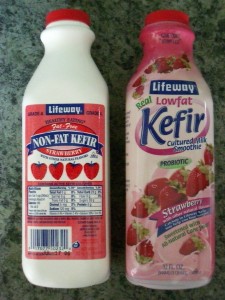
CLICK TO ORDER
A few hours after drinking, alcohol levels in your blood start to drop, which signals your body to wake up. It takes an average person about an hour to metabolize one drink, so if you have two glasses of wine with dinner, finish your last sip at least two hours before bed.
10. Snack on cheese and crackers

CLICK TO ORDER
The ideal nighttime nosh combines carbohydrates and either calcium or a protein that contains the amino acid tryptophan— studies show that both of these combos boost serotonin, a naturally occurring brain chemical that helps you feel calm. Enjoy your snack about an hour before bedtime so that the amino acids have time to reach your brain.
Some good choices:
• one piece of whole grain toast with a slice of low-fat cheese or turkey
• a banana with 1 teaspoon of peanut butter
• whole grain cereal and fat-free milk
• fruit and low-fat yogurt
11. Listen to a bedtime story

CLICK TO ORDER
Load a familiar audiobook on your iPod—one that you know well, so it doesn't engage you but distracts your attention until you drift off to sleep, suggested Shives. Relaxing music works well, too.
12. Stay cool...

CLICK TO ORDER
Experts usually recommend setting your bedroom thermostat between 65 degrees and 75 degrees—a good guideline, but pay attention to how you actually feel under the covers. Slipping between cool sheets helps trigger a drop in your body temperature. That shift signals the body to produce melatonin, which induces sleep. That's why it's also a good idea to take a warm bath or hot shower before going to bed: Both temporarily raise your body temperature, after which it gradually lowers in the cooler air, cueing your body to feel sleepy. But for optimal rest, once you've settled in to bed, you shouldn't feel cold or hot—but just right.
13. ...especially if you're menopausal
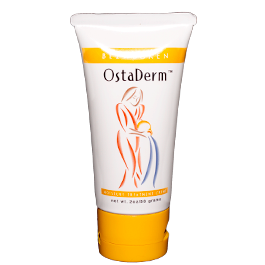
CLICK TO ORDER
During menopause, 75 percent of women suffer from hot flashes, and just over 20 percent have night sweats or hot flashes that trouble their sleep. Consider turning on a fan or the AC to cool and circulate the air. Just go low gradually: Your body loses some ability to regulate its temperature during rapid eye movement (REM) sleep, so overchilling your environment—down to 60 degrees, for instance—will backfire.
14. Spray a sleep-inducing scent

CLICK TO ORDER
Certain smells, such as lavender, chamomile, and ylang-ylang, activate the alpha wave activity in the back of your brain, which leads to relaxation and helps you sleep more soundly. Mix a few drops of essential oil and water in a spray bottle and give your pillowcase a spritz.
15. Turn on the white noise

CLICK TO ORDER
Sound machines designed to help you sleep produce a low-level soothing noise. These can help you tune out barking dogs, the TV downstairs, or any other disturbances so you can fall asleep and stay asleep.
16. Eliminate sneaky light sources

CLICK TO ORDER
"Light is a powerful signal to your brain to be awake," explained Shives. Even the glow from your laptop, iPad, smart phone, or any other electronics on your nightstand may pass through your closed eyelids and retinas into your hypothalamus—the part of your brain that controls sleep. This delays your brain's release of the sleep-promoting hormone melatonin. Thus, the darker your room is, the more soundly you'll sleep.
17. Consider kicking out furry bedmates

CLICK TO ORDER
Cats can be active in the late-night and early morning hours, and dogs may scratch, sniff, and snore you awake. More than half of people who sleep with their pets say the animals disturb their slumber, according to a survey from the Mayo Clinic Sleep Disorders Center. "But if your pet is a good, sound sleeper and snuggling up with him is comforting and soothing, it's fine to let him stay put," advised Shives.
18. Check your pillow position
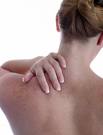
CLICK TO ORDER
The perfect prop for your head will keep your spine and neck in a straight line to avoid tension or cramps that can prevent you from falling asleep. Ask your spouse to check the alignment of your head and neck when you're in your starting sleep position. If your neck is flexed back or raised, get a pillow that lets you sleep in a better-aligned position. And if you're a stomach sleeper, consider using either no pillow or a very flat one to help keep your neck and spine straight.
19. Breathe deeply

CLICK TO ORDER
This technique helps reduce your heart rate and blood pressure, releases endorphins, and relaxes your body, priming you for sleep. Inhale for five seconds, pause for three, then exhale to a count of five. Start with eight repetitions; gradually increase to 15. To see if you're doing it right, Breus said to buy a bottle of children's bubbles, breathe in through your belly, and blow through the wand. The smooth and steady breath that you use to blow a bubble successfully should be what you strive for when you're trying to get to sleep.
20. Stay put if you wake up

CLICK TO ORDER
"The textbook advice is that if you can't fall back asleep in fifteen minutes, get out of bed," said Shives. "But I ask my patients, 'How do you feel in bed?' If they're not fretting or anxious, I tell them to stay there, in the dark, and do some deep breathing or visualization." But if lying in bed pushes your stress buttons, get up and do something quiet and relaxing (in dim light), such as gentle yoga or massaging your feet until you feel sleepy again.
Call KEEFE CLINIC if you need help sleeping 918-663-1111.
Courtesy of:
John H. Keefe III, D.C.
(918) 663-1111

CLICK TO ORDER
CONDITION OF THE WEEK: ALLERGIES can be annoying this time of year but how you treat them can make a big difference. Antihistamines might mask the symptoms of allergies but they don’t correct allergies. Side effects like clumsiness, convulsions, drowsiness, fast heartbeat, hallucinations, nausea and problems sleeping are just a few of the negative effects from antihistamines. The side effects from our allergy mix is less problems with allergies. By introducing dilute pollens that you’re allergic to the body reprograms the immune system not to react. Building the body’s immune system up and desensitizing your body to the pollens are the most effective way of addressing allergies long-term. It’s important that you continue on your allergy mix even after allergy season to develop a permanent immunity. It’s possible at one point you’ll not need to take the mix again because you will be permanently healed from your allergies.

CLICK TO ORDER OR CALL 918-663-1111
DIET: LOSS 1-2 LBS. PER DAY NuMedica's hc3 Lifestyle Program is a comprehensive 30 day supply designed to help the body burn stored fat as its primary energy source without decreasing muscle mass. This program is centered around a triple approach to healthy body composition which incorporates diet, exercise and nutrition. It contains essential vitamins, minerals and antioxidants as well as detoxification support and medium chain triglycerides to support optimal metabolic management. Included in the kit is a comprehensive program guide featuring sample menus and a progress chart. Feel great as you lose.

CLICK TO ORDER
IN THE NEWS: STUDY AFTER STUDY SHOWS THE FLU SHOT IS A SCAM A study published in the October 2008 issue of the Archives of Pediatric; Adolescent Medicine found that vaccinating young children against the flu had no impact on flu-related hospitalizations or doctor visits during two recent flu seasons. The researchers concluded that “significant influenza vaccine effectiveness could not be demonstrated for any season, age, or setting” examined. A 2008 study published in the Lancet found that influenza vaccination was NOT associated with a reduced risk of pneumonia in older people. This also supports an earlier study, published in The New England Journal of Medicine. Research published in the American Journal of Respiratory and Critical Care Medicine also confirms that there has been no decrease in deaths from influenza and pneumonia in the elderly, despite the fact that vaccination coverage among the elderly has increased from 15 percent in 1980 to 65 percent now. In 2007, researchers with the National Institute of Allergy and Infectious Diseases, and the National Institutes of Health published this conclusion in the Lancet Infectious Diseases: A large-scale, systematic review of 51 studies, published in the Cochrane Database of Systematic Reviews in 2006, found no evidence that the flu vaccine is any more effective than a placebo in children under 2. The studies involved 260,000 children, age 6 to 23 months.

CLICK TO ORDER
FUNNY BONE: My grandad has the heart of a lion and a life time ban from the San Diego Zoo. Long ago when men cursed and beat the ground with sticks, it was called witchcraft. Today, it's called golf.
Visit our web sites: keefeclinic.com&facebook.com/keefeclinic
Courtesy of:
John H. Keefe III, D.C.
(918) 663-1111

DIET: Medicinal Plants You Can Use to Benefit Your Health Gingeris best known for its antinausea effects but also has broad-spectrum antibacterial, antiviral, antioxidant, and anti-parasitic properties, to name just several of its more than 40 scientifically confirmed pharmacological actions. It is anti-inflammatory, making it valuable for pain relief for joint pain, menstrual pain, headaches, and more. Garlic has immune-boosting, antibacterial, antiviral, and anti-fungal effects. Many of garlic’s therapeutic effects are derived from its sulfur-containing compounds, such as allicin, which are also what give it its characteristic smell. Peppermint offers benefits to the respiratory system, including for coughs, colds, asthma, allergies, and tuberculosis. In terms of digestive health, peppermint oil capsules have been described as "the drug of first choice" in IBS patients,7 and peppermint oil is an effective alternative to drugs like Buscopan for reducing colonic spasms. Thymeis also nutrient dense, containing vitamin C, vitamin A, iron, manganese, copper, and dietary fiber. When used in cooked dishes, thyme may also help inhibit glycation making thyme a potential preventer of heart disease and premature aging. thyme oil’s is antibacterial, antispasmodic, antirheumatic, expectorant, hypertensive, and has calming properties.
 IN THE NEWS: FOODS TO HELP REDUCE GLAUCOMA RISK Consume abundant amounts of colorful fruit and vegetables. Avoid high intake of salt in patients with hypertensive glaucoma. Refrain from high-calorie diets (restricting fat) to avoid an increase in body fat. Consider eating fish or nuts rich in omega-3 PFA, which appear to reduce risk. Avoid drinking large amounts of liquid in a single take. It is preferable to drink small amounts in the course of the day. Consume moderate amounts of red wine, black chocolate and green tea. Avoid coffee and caffeinated beverages into reduce increased blood pressure if you already have glaucoma.
IN THE NEWS: FOODS TO HELP REDUCE GLAUCOMA RISK Consume abundant amounts of colorful fruit and vegetables. Avoid high intake of salt in patients with hypertensive glaucoma. Refrain from high-calorie diets (restricting fat) to avoid an increase in body fat. Consider eating fish or nuts rich in omega-3 PFA, which appear to reduce risk. Avoid drinking large amounts of liquid in a single take. It is preferable to drink small amounts in the course of the day. Consume moderate amounts of red wine, black chocolate and green tea. Avoid coffee and caffeinated beverages into reduce increased blood pressure if you already have glaucoma.
 CONDITION OF THE WEEK: LEG PAIN there can be different causes for leg pain. It could be due to muscle problems, alignment in the hip, knee, ankle or foot. A common cause for leg pain is pressure on the sciatic nerve coming from low back misalignments, and with those misalignments disk problems can contribute. The good news is chiropractic is one of the most effective treatments for leg pain. Covering leg pain with pain pills is dangerous on two levels: the problem with addiction and death, and then if you can effectively cover the pain with drugs you are allowing the underlying condition time to get worse. If you or someone you know suffers from leg pain tell them about chiropractic.
CONDITION OF THE WEEK: LEG PAIN there can be different causes for leg pain. It could be due to muscle problems, alignment in the hip, knee, ankle or foot. A common cause for leg pain is pressure on the sciatic nerve coming from low back misalignments, and with those misalignments disk problems can contribute. The good news is chiropractic is one of the most effective treatments for leg pain. Covering leg pain with pain pills is dangerous on two levels: the problem with addiction and death, and then if you can effectively cover the pain with drugs you are allowing the underlying condition time to get worse. If you or someone you know suffers from leg pain tell them about chiropractic.
 FUNNY BONE: I asked my North Korean friend how it was there, he said he couldn't complain.
FUNNY BONE: I asked my North Korean friend how it was there, he said he couldn't complain.
Visit our web sites: keefeclinic.com&facebook.com/keefeclinic

It is a scary thing to see your first born child sick, tied down to the bed, crying and scared. Being in a hospital you assume they would know what to do. That evening the doctor came by to explain that they didn’t know what to do and left us alone with a desperately sick child.

It was just a few months earlier that my mother hurt her back by falling on the ice and landing on the edge of the steps of our front porch. After visiting the family medical doctor and being told there were no breaks or fractures, she was sent home with a bottle of pain pills. They only made her sick and really didn't help with the pain. A friend hearing of the accident recommended chiropractic. That was the best recommendation he could give.

This was some 30 years before research proved chiropractic was the best treatment for back pain; a person in pain really doesn't care a lot about research, they just want to get well. After chiropractic care, her back problem was completely resolved, and even after 25 plus years there has been no reoccurring pain even with weather changes as the medical doctor had promised. He had explained to my parents how his mother had had a similar accident, and every time the weather changes she's taking pain pills. If you don't fix an injury, over the years arthritis will set in and you'll have continual problems. When you correct the problem, it tends not to bother you anymore. If you just treat the symptoms of a problem time will allow the problem, to progress.
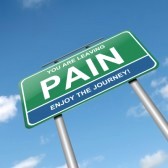
With my mother's success with chiropractic and back pain, anybody I knew who had neck or back pain, I would be quick to tell them about chiropractic. It wasn't long after that while I was going to Oral Roberts University on a partial trumpet scholarship that I woke up one morning with a facial paralysis. What connection is there with your facial muscles and your spine? I knew chiropractic was good for back pain but I didn't think about it when it came to a facial paralysis.

My medical doctor said I had Bell's palsy, and explained how he had Bell's palsy when he was in his early 20s. Now, in his late '50s the corner of his eye and corner of his mouth still drooped slightly. His treatment for me was to wait six weeks and see if it went away. I went to see the chiropractor. To my surprise not only did he feel he might be able to help but he found a sore spot in my neck that I never knew I had. In fact, I used to “pop” my own neck probably 10 or 15 times a day, not that it hurt but I just felt tension build up.
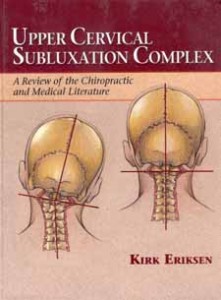
What I didn't know is that tension is the result of a cervical subluxation (vertebra out of place irritating the nerves). That had caused not only my chronic sinus problems but eventually my Bell's palsy. Within a week of adjustments, my paralysis was gone. Great, if I knew anybody with Bell's palsy or back pain I would tell them about chiropractic. What I still did not know is that a chiropractic physician treats the whole body through the nervous system by spinal adjustments, diet, acupuncture and other natural methods. That lack of understanding almost cost me my oldest son's life.

As I began this story, my six-month old son was in the hospital fighting for his life. As babies do from time to time, Brian developed diarrhea. Only in his case after two different medications failed and he became dehydrated with a temperature, I had to rush him to the hospital. I watched for four hours as they tried to put a needle in one of his blood vessels. After four hours they asked me to leave, and they worked another two or three hours trying to find a large enough vessel to feed him by IV. When I was allowed back in the room Brian was tied to a hospital bed, his arms tied down, his legs tied down and a needle in his leg because they couldn't find a vein. They told me I couldn't feed him anything but ice chips. The ice chips went straight through him. After the doctor told me there was nothing more they could do I watched my son getting worse. After a day and a half I realized if I wanted to save my son’s life, I would have to do something completely different. I called my chiropractor and explained the problem. To my surprise he felt he might be able to help. In order to get proper care I had to withdraw my son from a hospital.

Then the miracle began. Telling me what to feed him and having spinal adjustments, I saw my son start to recover. In a matter of days, he started to return to his normal self. Chiropractic had done it again, and had released in my son that inborn ability to heal himself. All this time my son could have been getting better. In fact, when I was receiving treatments for my Bell's palsy, Brian's subluxations that caused the diarrhea could have been found and corrected weeks before. Mothers listen, the birthing process can be stressful to a baby’s delicate spine. A simple chiropractic adjustment could prevent a number of childhood diseases. Even infantile colic responds best to chiropractic care. Many mothers rave about chiropractic's ability to stop reoccurring ear infections.
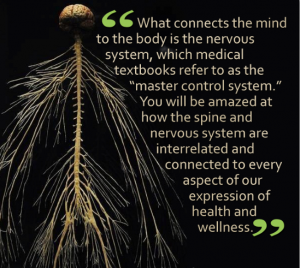
The power that made the body can heal the body. When you think about life, it’s really amazing-one cell becoming a complete human being. Within that one cell is the ability, power, and intelligence to construct a fully functioning human being with billions of cells. In chiropractic we call that intelligence, innate intelligence. This innate intelligence has the ability to heal the body. In my son's case, this innate intelligence was blocked by subluxation. When that subluxation (misalignment) was removed, his body started to function normally. The normal state of the body is health. If the body is not functioning normally, there could be some interference with the expression of the innate intelligence. The simple fact of removing subluxations can cause profound changes within the body. Chiropractic is not so much treatment for a certain condition as it is treatment for the body.

Chiropractic Physicians are concerned with the same issues that any type of physician would be-blood pressure, ears, eyes, nose, throat-all potential areas of investigation. A short list of diagnostic tests chiropractic physicians might recommend include: blood work, EKG and lung function test. Understanding what's going wrong can help us develop an overall treatment approach to help return your body back to normal function and health. Nutritional therapy, acupuncture, homeopathy and bio-magnetics, along with chiropractic adjustments, exercise and diet are just a few of the tools a chiropractic physician might use. Whereas drugs primarily treat the symptoms, the tools a chiropractic physician would use are focused on underlying dysfunction and the correction of that dysfunction. Chiropractic physicians treat the cause not the symptoms. There is a place for drug therapy and even surgery.

Chiropractic first, drugs second, surgery last.
Visit: www.facebook.com/KeefeClinic
Courtesy of:
John H. Keefe III, D.C.
(918) 663-1111
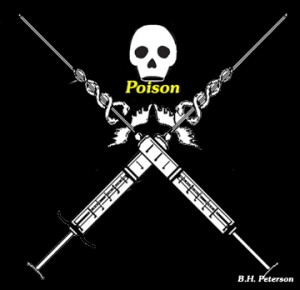
IN THE NEWS: Mystery virus EV-D68 exploding among vaccinated children only The rapid explosion of mystery virus EV-D68 is sending hundreds of children to hospitals across Missouri, Colorado, Kansas, Utah and eight other states. "In Kansas City, about 475 children were recently treated at Children's Mercy Hospital, and at least 60 of them received intensive hospitalization," reports CNN. (1) Children who have been vaccinated with MMR vaccines, influenza vaccines, polio vaccines and many others are the same children who are now being struck by EV-D68. CNN goes on to report: “It’s worse in terms of scope of critically ill children who require intensive care. I would call it unprecedented. I've practiced for 30 years in pediatrics, and I've never seen anything quite like this," said Dr. Mary Anne Jackson, the hospital's division director for infectious diseases.
 WELLNESS: Are you deficient in thiamine? Here's what you need to know about Vitamin B1 Small amounts can be found in nearly all foods and many foods have substantial amounts of B1, yet an estimated 20% of Americans are found to be deficient in this extremely important and necessary vitamin. The reason? B1 is generally destroyed when a food is processed. B1 is one of the essential B vitamins that work in concert with other B vitamins to turn carbohydrates into glucose, providing energy for the body and brain. It is also necessary for manufacturing fats and metabolizing proteins. It is essential for the nervous system. It is also used in treatment for ulcerative colitis, heart disease, diabetic pain, AIDS, canker sores, vision problems, cataracts, glaucoma, motion sickness, and stress. Some athletes use it to improve performance.
WELLNESS: Are you deficient in thiamine? Here's what you need to know about Vitamin B1 Small amounts can be found in nearly all foods and many foods have substantial amounts of B1, yet an estimated 20% of Americans are found to be deficient in this extremely important and necessary vitamin. The reason? B1 is generally destroyed when a food is processed. B1 is one of the essential B vitamins that work in concert with other B vitamins to turn carbohydrates into glucose, providing energy for the body and brain. It is also necessary for manufacturing fats and metabolizing proteins. It is essential for the nervous system. It is also used in treatment for ulcerative colitis, heart disease, diabetic pain, AIDS, canker sores, vision problems, cataracts, glaucoma, motion sickness, and stress. Some athletes use it to improve performance.

CONDITION OF THE WEEK: UPPER BACK PAIN the nerves from the upper and mid back are the ones that control and coordinate the heart, lungs, digestive system, kidney and adrenals. Pressure on those nerves can interfere with normal function of these organs. If these organs are under enough stress they will refer pain to the upper and mid back. If you’re having breathing problems or digestive problems or feeling stressed and retaining water you might need this area of your spine corrected with chiropractic adjustments. If you have upper and mid back pain your spine might be cutting off a normal nerve flow to these organs. If you or somebody you know suffers from upper back pain tell them about chiropractic.
 FUNNY BONE:A mother and a daughter are shopping in the mall, when the mother eyes an expensive fur coat. "This year," she says, "I think that I will buy my present instead of making you and dad shop for me." The daughter nods in agreement. "And I think this fur coat would be perfect too." The daughter protests, "But mom, some helpless, poor creature has to suffer so that you can have this." "Don't worry honey," says the mother, "your father won't get the bill for a couple of weeks."
FUNNY BONE:A mother and a daughter are shopping in the mall, when the mother eyes an expensive fur coat. "This year," she says, "I think that I will buy my present instead of making you and dad shop for me." The daughter nods in agreement. "And I think this fur coat would be perfect too." The daughter protests, "But mom, some helpless, poor creature has to suffer so that you can have this." "Don't worry honey," says the mother, "your father won't get the bill for a couple of weeks."
Visit our web site: keefeclinic.com&facebook.com/keefeclinic back

THANK-YOU FOR 38 YEARS---Saturday Sept. 20th we would like to say thanks. Between 9-1 Saturday morning we will give your family members, friends or enemies a free diagnostic work-up (exam and one X-ray if needed) and give you a free treatment. Who do you know that has been putting off taking care of themselves? Drag them in and we will get them on the road to better health. Have you gone too long since your last adjustment? Then get your spine in here and let us de-stress it.
NO APPOINTMENT NEEDED, JUST COME IN.
DID YOU KNOW
Our nervous system tabulates approximately 4 billion environmental signals per second. Its primary role is to “read” the environment and make appropriate adjustments of growth and protection behaviors in order to ensure survival. Subluxations (misalignments) interfere with your nervous system's ability to keep you well. Getting chiropractic adjustments help you stay well.
From the desk of Dr. Keefe:
After 38 years, and starting on my 39th year in practice, I have come to one conclusion. Chiropractic combined with other natural health care techniques is the most effective approach to today's health problems. One of the fastest growing health problems today is whiplash neck injuries. The symptoms of whiplash are long and varied: headache, neck pain, tension, muscle spasm, blackouts, fatigue, loss of balance-the list goes on and on. NOTE: YOU MIGHT NOT HAVE SYMPTOMS UNTIL WEEKS OR MONTHS LATER.
It can be a tough road in trying to return a neck back to how it was before the accident. The most important thing you can do is KEEP YOUR APPOINTMENTS and follow all of our instructions. The injury involves all of the supporting structures of the neck: the muscles, tendons, ligaments, discs, nerves and joints. It can take months of hard work to restore the damage caused. If this injury is not reversed, it can cause permanent damage which can show up years from now as arthritis, neck instability, headaches... and again the list goes on. That's why everyone, after an accident, should get a chiropractic exam. Just covering up the symptoms with drugs is the most dangerous gamble one can take.
Let's review what steps you need to take: 1) Sleep on your back with an orthopedic pillow or a rolled up towel. 2) Do exercises and neck traction at home. 3) Don't do alot of work above your head and strain your neck and arm muscles. 4) Practice good posture and don't lean your head down to read or to do paper work. 5) Heavy lifting can also strain a weak neck (ask for our sheet on proper lifting and posture).-Be positive!
With proper care you have a great chance for a good recovery!
A new study in the "Journal of Orthopedic Medicine" says "Chiropractic is the only effective proven treatment".
Courtesy of:
John H. Keefe III, D.C.
(918) 663-1111

WELLNESS:Health benefits of blackberries The berries are very low in calories. 100 g provide just 43 calories. Nonetheless, they are rich in soluble and insoluble fiber (100 g whole berries consist of 5.3 g or 14% RDA of fiber). Xylitol, a low-calorie sugar substitute in the fruit fiber, absorbs more slowly than glucose inside the gut, and thus does not cause rapid fluctuations in blood sugar levels. Blackberries compose significantly high amounts of antioxidant compounds that may have potential health benefits against cancer, aging, inflammation, and neurological diseases. Fresh berries are an excellent source of vitamin-C adequate levels of vitamin A, vitamin E, and vitamin K (16% of RDA/100 g. Blackberries have an ORAC value (oxygen radical absorbance capacity, a measure of anti-oxidant strength) of about 5347µmol TE per 100 grams. Further, blackberries contain a good amount of minerals like potassium, manganese, copper, and magnesium.

IN THE NEWS: To cut asthma risk, get a fur blanket for baby, study suggests Newborns who sleep on animal fur in the first months of life aren't as likely to come down with asthma and allergies later in life, a new study suggests. Researchers aren't talking about snuggling up with a dog or cat—they mean, for example, a sheepskin rug or blanket, explains Time. The study is out of Germany, and such bedding was common there when the kids were born in the 1990s.Followup studies over the years found that those who slept on animal fur in their first three months of life had a 79% lower risk of developing asthma by the age of 6, and a 41% lower risk by the age of 10, reports Science World.

CONDITION OF THE WEEK: MUSCLE PAIN given the national disaster of drugs like muscle relaxers and pain pills, chiropractic offers elimination techniques for pain, not just masking. The dangers of addiction and death from painkillers is becoming a national disgrace. Chiropractic and natural healthcare offers effective elimination of the cause for muscle pain. Tell someone else about chiropractic, you might save a life.
 FUNNY BONE: "You May Be A Redneck If..." You list dogs as dependants on your tax forms. Your taxidermist also does your taxes. You've ever let your dog babysit your kids. Your security system is the latch on your screen door. Your financial planner told you to buy lottery tickets. You've ever left a bingo game in handcuffs. You've ever had a dream about beef jerky. You flush the toilet and the dog thinks you're giving him fresh water.
FUNNY BONE: "You May Be A Redneck If..." You list dogs as dependants on your tax forms. Your taxidermist also does your taxes. You've ever let your dog babysit your kids. Your security system is the latch on your screen door. Your financial planner told you to buy lottery tickets. You've ever left a bingo game in handcuffs. You've ever had a dream about beef jerky. You flush the toilet and the dog thinks you're giving him fresh water.
Visit our web sites: keefeclinic.com&facebook.com/keefeclinic
Courtesy of:
John H. Keefe III, D.C.
(918) 663-1111

IN THE NEWS: Low iron intake during pregnancy linked with autism For children whose mothers had low supplemental iron and other risk factors, researchers at the University of California, Davis found a five-fold greater risk of autism. In a new study from the UC Davis MIND Institute, researchers examined the relationship between maternal iron intake and having a child with autism-spectrum disorder. The five-fold greater risk of autism was associated with low iron intake— by way of supplements— if the mother was age 35 or older at the time of the child’s birth, or if she suffered from metabolic conditions such as obesity, hypertension or diabetes.

WELLNESS:Fact or Myth: Do Hot Dogs Raise Your Risk of Cancer? Hot dogs. The quintessential American food. In fact, Americans consume an estimated 7 billion hot dogs a year. July 4th appears to be national hot dog day, with over 150 million consumed in the single 24-hour period. In 2009, the American Institute for Cancer Research issued a precedent-setting report. Basing their findings on 7000 scientific studies, researchers declared that for every 50 grams of processed meat—that’s just one hot dog—you increase your risk for developing colorectal cancer by 21%. Hot dogs pose such a great risk because they are loaded with carcinogenic ingredients. Of particular notoriety are nitrates and nitrites, two chemicals that, when heated, combine with amines to form nitrosamines, which have been proven to cause cancer.
 CONDITION OF THE WEEK: National Chiropractic Month American Chiropractic Association (ACA) has announced a national health care observance.Who do you know who is hurting? Who do you know that you have been trying to get started at Keefe Clinic? Now is the time to get your spouse, or child started on the road to good health.Complimentary DIAGNOSTIC WORK UP DURING OCTOBER Complimentary initial exam and one X-ray.
CONDITION OF THE WEEK: National Chiropractic Month American Chiropractic Association (ACA) has announced a national health care observance.Who do you know who is hurting? Who do you know that you have been trying to get started at Keefe Clinic? Now is the time to get your spouse, or child started on the road to good health.Complimentary DIAGNOSTIC WORK UP DURING OCTOBER Complimentary initial exam and one X-ray.

FUNNY BONE :A German Shepherd went to the telegram office, took out a blank form, and wrote: "Woof. Woof. Woof. Woof. Woof. Woof. Woof. Woof." The clerk examined the paper and politely told the dog: "There are only nine words here. You could send another 'Woof' for the same price." "But," the dog replied, "that would make no sense at all."
Visit our web site: Keefeclinic.com&facebook.com/keefeclinic
You are a natural born healer!
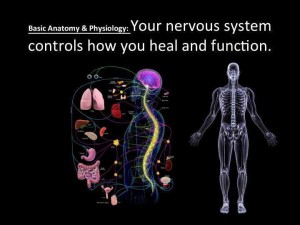
CLICK FOR MORE INFO
What? You didn’t know that? Indeed, even before you breathed your first breath, you were designed with an amazing innate healing ability that allows your body to heal all disease! Yes, it’s true! Your body is fully equipped to heal everything from a cut on your hand to cancer in your colon and everything in between. That is, as long as there is no interference.
In fact, we have all witnessed this amazing healing in action on many occasions throughout are lives. Think about the last time you cut your finger. Maybe you were distracted by your computer screen as you reached across your desk for a piece of paper and then – suddenly – felt that all too familiar intense, burning pain of a paper cut. You snatched your hand back and looked at the paper you were reaching for to see what had bitten you but nothing was there except the faint red tinge of your blood. You look at your finger and see a tiny, little slice in your skin. You think: “Holy cow! How can such a tiny cut bring such sharp pain!”
Innate Healing Of A Paper Cut

CLICK FOR MORE INFO
Now, once you stop the bleeding and move past the pain, what do you do to cause that little cut to heal? You may cover it with a bandage to keep it clean but does the bandage heal the cut? No, the cut will heal with or without a bandage.
Maybe you use some antibiotic cream to kill any germs but does the cream heal the wound? No, the wound heals with or without the cream, as well. Your body’s innate healing works to heal the wound all on its own. In fact, that little paper cut set into motion a cascade of over 20 microscopic, biochemical reactions!
Amazing! Those biochemical reactions cause the blood to coagulate, form a clot and prepare the injured area for the rest of the healing process. You probably didn’t know that, yet your body clots blood and heals cuts all the time, regardless of your knowledge of the process. That automatic process is so complex that if only one step is absent, one little enzyme, your blood will not clot – a condition known as hemophilia. It is an irreducibly complex process, a process that none of us could ever fashion on our own – truly a stamp of our Creator.
Innate Healing of Cancer

CLICK FOR MORE INFO
Only YOU Can Heal Cancer!
“Okay”, you may say, “I get the blood clotting example but I have always been told that cancer runs in my family. There is nothing I can do about it. One day I will get cancer too.” My friend, I hope that I do not offend you but you have been lied to! Your body’s innate healing is designed to rid itself of cancer just as magnificently as it heals itself from a paper cut.
The immune system you were born with is designed to not only recognize and kill foreign invaders (bacteria, viruses, and parasites) but to recognize and kill aberrant cells that are part of your own body as well. Cancer cells are produced (and killed) in your body every day and you never realize it. It is a part of the normal process of cell replication.
However, if something goes wrong in that process, a mutated cell may develop and replicate, forming a tumor. Your immune system has specialized cells that monitor your body for these mutated tumor cells, a process called immunosurveillance. Other cells, called natural killer T cells are designed to help your body kill those tumor cells. This is an innate process that happens every day in your body. Your body does not need any help to heal you of these cancer cells – it just needs no interference!
The Brain-Body Connection

CLICK FOR MORE INFO
Neuroimmunology is the scientific field that studies the relationship of the immune system and the nervous system. We have discussed some of the functions of the immune system (in killing cancer cells as well as foreign invaders) and endocrine system (in clotting blood) but it is the nervous system that brings your innate healing all together.
Your nervous system is composed of your brain, spinal cord and nerves. The purpose of your nervous system is to control and coordinate the function of every cell, tissue and organ of your body. In order for you to enjoy the scent of a beautiful rose, or the sight of an amazing sunset, for that paper cut on your hand to heal, and for those immune system cells to function and kill cancer cells, information has to flow unimpeded from the brain, down the spinal cord and across your nerves to every cell and organ that is performing those functions.
Your nervous system is the master control system of your body controlling every function and all innate healing in your body. In fact, your body’s ability to heal itself is directly related to the health of your nervous system. When you nervous system is healthy and unobstructed, your body can function and heal at 100%. However, if there is any interference in this normal flow of information from your brain to your body, healing is interrupted.
CHIROPRACTIC REMOVES THE INTERFERENCE
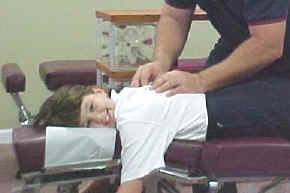
CLICK FOR MORE INFO
Courtesy of:
John H. Keefe III, D.C.
(918) 663-1111

IN THE NEWS: Many commonly prescribed drugs taken by older adults can raise risk of falls After adjusting for the number of medications a person was taking, the researchers found men and women taking opioid painkillers as well as men taking antidepressants were more than twice as likely to have a fall injury as seniors who were not taking those drugs. Women taking antidepressants were 75 percent more likely to have a fall injury. SEEK A NATURAL APPROACH

WELLNESS: Essential Oils Support Physical and Emotional Well-Being STRESS Lavender, lemon, bergamot, peppermint, vetiver, pine, and ylang ylang INSOMNIA Lavender, chamomile, jasmine, benzoin, neroli, rose, sandalwood, sweet marjoram, and ylang ylang; lemon can wake you upANXIETY Lavender, bergamot, rose, clary sage, lemon, Roman chamomile, orange, sandalwood, rose-scented geranium, and pine DEPRESSED MOOD Peppermint, chamomile, lavender, and jasminePAIN Lavender, chamomile, clary sage, juniper, eucalyptus, rosemary, peppermint, lavender, and green apple (especially for migraines) NAUSEA AND VOMITING Mint, ginger, lemon, orange, ginger, dill, fennel, chamomile, clary sage, and lavender MEMORY and attention Sage, peppermint, and cinnamon ASK ABOUT ESSENTIAL OILS

CONDITION OF THE WEEK: Carpal tunnel syndrome (pain, numbness and tingling in the wrist and hand) many patients are recommended surgeries with the possibility of complications and repetitive surgeries as well as powerful drugs like steroids, anti-inflammatories and painkillers (number one killer in the US). Chiropractic and natural healthcare offers powerful treatments to resolve carpal tunnel syndrome at its root cause. A high percentage times subluxations with the lower neck affecting the brachial plexus is the roots of most carpal tunnel syndrome. There are also deficiencies in key B vitamins that can lead to inflammation of the nerves at the wrist. Sometimes misalignment at the elbow, wrist or hand can also be a source of inflammation. If you or someone you know suffer from this condition they should call our office for an appointment. Surgery should always be the last approach in any condition. Chiropractic has been extremely effective track record in correcting this problem.

FUNNY BONE: The poorly paid local pastor grew watermelons to supplement his meager income. He was doing pretty well, but he was disturbed by some local kids who would sneak into his watermelon patch at night and eat his watermelons. After some careful thought, he came up with a clever idea that he thought would scare the kids away for sure. He made up a sign and posted it in the field. The next day, the kids show up and they saw the sign which read, "Warning! One of the watermelons in this field has been injected with cyanide." The kids ran off, made up their own sign and posted it next to the pastor's sign. When the pastor returned, he surveyed the field. He noticed that no watermelons are missing, but the sign next to his read, "Now there are two!"
Visit our web site: keefeclinic.com&facebook.com/keefeclinic
Courtesy of:
John H. Keefe III, D.C.
(918) 663-1111
IN THE NEWS: THE FACTS ABOUT LOW TESTOSTERONE THERAPY Amid the constant controversy and headlines, truths about testosterone – and more specifically testosterone therapy – are hard to decipher. In men, testosterone is thought to regulate some of the following functions: • Sex drive • Bone mass • Fat distribution • Muscle and strength • Red blood cell production • Sperm production. Growing concern about the side effects of these therapies, following findings of several notable studies, has prompted many doctors and the government to take a step back and reevaluate the safety of such treatment. It is warranted that the FDA is investigating the risk of cardiovascular injury, stroke and death in men exposed to FDA-approved testosterone products following medical study findings. Patients and physicians alike need to be aware that once you start therapy, you suppress your own production of testosterone and injections become a lifetime commitment. ASK ABOUT A NATURAL APPROACH
WELLNESS: THE HEALING EFFECTS OF NATURE (Finnish Forest Research Institute)Many studies show that after stressful or concentration-demanding situations, people recover faster and better in natural environments than in urban settings. Blood pressure, heart rate, muscle tension and the level of "stress hormones" all decrease faster in natural settings. Depression, anger and aggressiveness are reduced in green environments and ADHD symptoms in children reduce when they play in green settings. Forest visits may also strengthen our immune system by increasing the activity and number of natural killer cells that destroy cancer cells.
CONDITION OF THE WEEK: ARTHRITIS-there can be many different causes for arthritis but one of the most common is friction due to joint misalignment. When the joints of the spine are out of alignment mechanical friction can have a local effect but the irritation on the nerves that exit between those joints can cause inflammation in the joints those nerves supply like in the arms or legs. There are many dietary reasons for arthritis including imbalances that cause inflammation chemistry or mineral deficiencies and certain food allergies can also be a cause. Stresses to the immune system from viruses, bacteria and other microorganisms can produce arthritis plus if the immune system is out of balance the body can attack its own tissues: for instance joints. Fish oils like salmon oil or cod liver oil can be a very effective treatment in a lot of cases. So if you suffer from arthritis a combination of chiropractic adjustments, detoxification, and targeted nutrition can get to the roots of the cause.
FUNNY BONE :A new report claims that posing with a dog in your online dating profile makes you more desirable — and posing with a cat means you're going to die alone.
Visit our web site: Keefeclinic.com&facebook.com/keefeclinic
Courtesy of:
John H. Keefe III, D.C.
(918) 663-1111
IN THE NEWS:. (IN MEMORY OF ROBIN WILLIAMS) Why do people who abuse drugs have a higher suicide rate? Abusing drugs recreationally not only leads to addiction but alters the way people think, feel, and behave by disrupting neurotransmission. Over the past few decades, studies have established that drug dependency and addiction are features of an organic brain disease caused by drugs accumulative impact on neurotransmitters. As you alter neurotransmitters you’re setting yourself up for increased levels of depression and other delusional thinking. For patients who want to overcome drug addiction or who have gone through a program and are presently drug-free need to consider balancing their neurotransmitters through specific nutritional therapy
WELLNESS: Key Cancer-Fighting Foods In addition to reviewing the worldwide evidence on this subject, the Nutrinome Project, a project conducted in their own lab, has shown that raw extracts from certain fruits and vegetables inhibit the growth of certain cancer cells to varying degrees. Using medulloblastoma cancer cells (a very aggressive brain tumor), they showed that extracts of certain fruits and vegetables could inhibit the growth of these cancer cells in the following order: Brussels sprouts - ½ cup, Broccoli, cauliflower, cabbage - ½ cup,Garlic - 2 cloves, Onions, shallots - ½ cup, Spinach, watercress - ½ cup, Soy (edamame, dry roasted beans) - ½ cup, Freshly ground flaxseeds - 1 tablespoon, Tomato paste - 1 tablespoon, Turmeric - 1 teaspoon, Black pepper - ½ teaspoon, Blueberries, raspberries, blackberries - ½ cup, Dried cranberries - ½ cup, Grapes - ½ cup, Dark chocolate (70 percent cacao) - 40 g Citrus juice - ½ cup, Green tea - three 250 ml servings, Red wine - 1 glass (5 ounces)
CONDITION OF THE WEEK: ELBOW PAIN from bursitis to sports injury, elbow pain is something that responds extremely well to chiropractic care. Sometimes to help support the bursa or the connective tissue nutritional therapy is an extremely good adjunct. Muscle strains can also lead to elbow pain due to improper muscle function and trigger point therapy is an excellent tool to resolve this source of elbow pain. If you or somebody you know suffers from elbow pain tell them about chiropractic.
FUNNY BONE:Montana Dumb Laws – It is a felony for a wife to open her husband's mail. - It is illegal to have a sheep in the cab of your truck without a chaperone. - Seven or more Indians are considered a raiding or war party and it is legal to shoot them. - In Montana, it is illegal for married women to go fishing alone on Sundays, and illegal for unmarried women to fish alone at all. - It is a misdemeanor to show movies that depict acts of felonious crime. - Excelsior Springs: Balls may not be thrown within the city limits. - Helena: No item may be thrown across a street. - Helena: A woman can't dance on a table in a saloon or bar unless she has on at least three pounds, two ounces of clothing. - Salisbury: Pop bottles are not to be thrown on the ground. - Whitehall: It is illegal to operate a vehicle with ice picks attached to the wheels.
Visit our web site: keefeclinic.com&facebook.com/keefeclinic
Courtesy of:
John H. Keefe III, D.C.
(918) 663-1111

WELLNESS: Earthing may actually be one of the best-kept secrets for preventing blood clots—it's an old practice gaining a new appreciation! In the simplest terms, Earthing (or grounding your body to the earth) is what occurs when you walk barefoot on bare soil, grass, sand, brick, etc. Free electrons are transferred from the earth into your body through your feet, and these electrons are some of the most potent antioxidants known to man. One of the most important discoveries about Earthing is that it makes your blood less viscous, which has profound implications for your cardiovascular health because virtually every aspect of cardiovascular disease has been correlated with elevated blood viscosity. Earthing is so effective at achieving a blood thinning effect that anyone take prescription anticoagulants like Coumadin need to lower their dosage if they start to implement Earthing.

IN THE NEWS: FDA Urges Tighter Rein on Hydrocodone Medication In the year 2011, more than five billion hydrocodone-containing pain pills were prescribed to an estimated 47 million American patients. In little over one decade (1999-2010), deaths from prescription painkiller overdose—whether accidental or intentional—increased by 400 percent among women and 265 percent in men. Prescription drug deaths have far surpassed deaths from illicit street drugs, accounting for about three-quarters of all drug overdose deaths in the US. TELL A FRIEND ABOUT CHIROPRACTIC—SAVE A LIFE
 CONDITION OF THE WEEK: ADHD Helped With Chiropractic, A Case Study The case was of a 5 year old boy who had been diagnosed with ADHD at age 2. The childs pediatrician prescribed methylphenidate (Ritalin), Adderall, and Haldol for the next 3 years. The combination of drugs was unsuccessful in helping the child. At age 5 the child was brought to a chiropractor to see if chiropractic care would help. The chiropractic examination and x-rays showed noticeable spinal distortion including a reversal of the normal neck curve indicative of subluxations. Chiropractic care was begun and the childs progress was monitored. According to his mother, positive changes in her son's general behavior were noticed. The medical doctor reviewed and examined the child and based on that assessment and his clinical experience, the MD felt that the young boy was no longer exhibiting symptoms associated with ADHD. He then took the boy off the medications that he had been taking for 3 years.
CONDITION OF THE WEEK: ADHD Helped With Chiropractic, A Case Study The case was of a 5 year old boy who had been diagnosed with ADHD at age 2. The childs pediatrician prescribed methylphenidate (Ritalin), Adderall, and Haldol for the next 3 years. The combination of drugs was unsuccessful in helping the child. At age 5 the child was brought to a chiropractor to see if chiropractic care would help. The chiropractic examination and x-rays showed noticeable spinal distortion including a reversal of the normal neck curve indicative of subluxations. Chiropractic care was begun and the childs progress was monitored. According to his mother, positive changes in her son's general behavior were noticed. The medical doctor reviewed and examined the child and based on that assessment and his clinical experience, the MD felt that the young boy was no longer exhibiting symptoms associated with ADHD. He then took the boy off the medications that he had been taking for 3 years.

FUNNY BONE:A Japanese clothing company has been criticized for labeling United States sizes skinny, fat, and jumbo. After a huge outcry they changed them to "small, medium, and American."
Visit our web sites: keefeclinic.com&facebook.com/keefeclinic
Courtesy of:
John H. Keefe III, D.C.
(918) 663-1111

DIET:A natural and delicious alternative to Wheat and grain that's packed with dietary fiber and is a good source of protein also! Coconut flour is unlike any other consisting of 14% coconut oil and 58% dietary fiber! Remaining 28% consist of water, protein, and carbohydrates. Coconut flour is ideal for baking. Coconut flour is gluten-free and hypoallergenic. Coconut flour consists of the highest percentages of dietary fiber (58%) found in any flour. Coconut flour can help you reach a healthy weight. It promotes heart health and supports your immune system and facilitates better digestion.
 IN THE NEWS: Friends have more DNA in common than strangers People may unsuspectingly choose friends who have some DNA sequences in common with them, a new analysis finds. Researchers compared gene variations between nearly 2,000 people who were not biologically related, and found that friends had more gene variations in common than strangers. The study lends a possible scientific backing for the well-worn clichs, "We're just like family," or "Friends are the family you choose," the researchers said.
IN THE NEWS: Friends have more DNA in common than strangers People may unsuspectingly choose friends who have some DNA sequences in common with them, a new analysis finds. Researchers compared gene variations between nearly 2,000 people who were not biologically related, and found that friends had more gene variations in common than strangers. The study lends a possible scientific backing for the well-worn clichs, "We're just like family," or "Friends are the family you choose," the researchers said.
 CONDITION OF THE WEEK:WEAK IMMUNE SYSTEM Do you catch colds and viruses often? Are you sick a lot? Do you have allergies? Are you run down and fatigued most of the time? You may have a weak immune system. Studies show chiropractic patients who get regular chiropractic care have a immune system that is 200% more effective than the average person on the street. If you or someone you know suffers from some of the symptoms listed above or have an autoimmune disorders, tell them about chiropractic.
CONDITION OF THE WEEK:WEAK IMMUNE SYSTEM Do you catch colds and viruses often? Are you sick a lot? Do you have allergies? Are you run down and fatigued most of the time? You may have a weak immune system. Studies show chiropractic patients who get regular chiropractic care have a immune system that is 200% more effective than the average person on the street. If you or someone you know suffers from some of the symptoms listed above or have an autoimmune disorders, tell them about chiropractic.

FUNNY BONE: AFTERLIFE after dying in a car crash, three friends go to Heaven for orientation. They are all asked the same question, "When you're lying in your casket, and friends and family are mourning over you, what would you like to hear them say about you?" The first guy immediately responds, "I would like to hear them say that I was one of the great doctors of my time, and a great family man." The second guy says, "I would like to hear that I was a wonderful husband and school teacher who made a huge difference in the children of tomorrow." The last guy thinks for a moment, and then replies, "I guess I'd like to hear them say, ' Look, he's moving!'"
Visit our web sites: keefeclinic.com&facebook.com/keefeclinic
Courtesy of:
John H. Keefe III, D.C.
(918) 663-1111
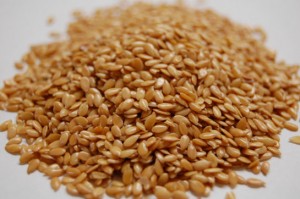
| WELLNESS/PREVENTION: Is your child's breakfast cereal doing more harm than good? Breakfast cereals are a multi-billion dollar industry. Unpublished studies have shown that rats eating the boxes of cereals lived longer than those eating the cereal itself. The large corporate food industry with its many lobbyists have successfully kept all research on the dangers of cold cereals out of published journals. When looking for breakfast foods, choose real foods that are not processed. Good breakfast choices include high quality, organic pastured eggs, eaten raw in smoothies or cooked. Eggs can be cooked as delicious omelets with vegetables and cheese, sunny side up, soft or hard boiled. Eating eggs with the yolk uncooked leaves more nutrients intact.

IN THE NEWS: Reasons why you need more fat in your diet Fat doesn’t make us fat—sugar does. Saturated fat helps make you feel full. Processed meats like bologna and bacon are worse for the body than a steak. Add two servings of nuts to your weekly diet, and you’ll cut your risk of death due to heart disease by 11 percent. Manmade trans fats found in partially hydrogenated oils like shortening are definitely bad for the body. Fats found in olive oil and fish are rich in “good” cholesterol.

CONDITION OF THE WEEK: LUNG PROBLEMSBreathing Problems can come fromAllergies, Panic attacks, Lung disease, Blockage of air passages in the mouth, throat or nose, Heart disease, Blood clot in arteries of the lungs, or Emotional distress. The nervous system directly controls breathing and airway constriction/dilation. Autonomic nervous system dysfunction is common in asthmatic sufferers. Mobility of the thoracic spine has been shown to directly affect respiratory function. Chiropractors correct subluxations in the spine which can irritate the nerve supply to the lungs and airways. No matter what your breathing problems are, chiropractic can be beneficial. If you’re interested in drug-free treatment for breathing problems, chiropractic is the perfect solution.

FUNNY BONE: A nervous taxpayer was unhappily conversing with the IRS auditor who had come to review his records. At one point the auditor exclaimed, "We feel it is a great privilege to be allowed to live and work in the USA. As a citizen you have an obligation to pay taxes, and we expect you to eagerly pay them with a smile."
"Thank God," returned the taxpayer. "I thought you were going to want cash." |
|
| |
|
|
|
|
Visit our web site: keefeclinic.com&facebook.com/keefeclinic
Courtesy of:
John H. Keefe III, D.C.
(918) 663-1111
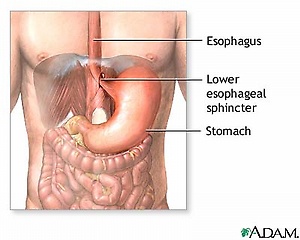
CONDITION OF THE WEEK: INDIGESTION-your digestive system is a complex miracle of activity. Stress, poor diet, toxicity and subluxations can compromise your digestive system. Chiropractic care and nutritional therapy are the most effective ways of reestablishing normal digestion. Covering up symptoms will not fix the problem. It will only allow the problem time to get worse. Tell others about chiropractic.
 DIET: HOW CHILIES CAN BE USED TO TREAT PAIN Chili peppers’ heat comes from capsaicin, a compound produced to protect them from fungal attack. When you eat a chili pepper, capsaicin binds to and activates heat receptor proteins called TRPV1, so even though you’re not actually in danger, your body thinks it’s being exposed to extreme heat. If exposed to capsaicin for long enough, your pain nerve cells will become de-sensitized to the painful stimulus. Capsaicin is available in pain-relieving creams and patches, and has shown promise for relieving shingles pain, osteoarthritis, psoriasis symptoms, and more. Capsaicin has both antioxidant and anti-inflammatory properties, and has also shown some promise for cancer, weight loss, and allergy symptoms.
DIET: HOW CHILIES CAN BE USED TO TREAT PAIN Chili peppers’ heat comes from capsaicin, a compound produced to protect them from fungal attack. When you eat a chili pepper, capsaicin binds to and activates heat receptor proteins called TRPV1, so even though you’re not actually in danger, your body thinks it’s being exposed to extreme heat. If exposed to capsaicin for long enough, your pain nerve cells will become de-sensitized to the painful stimulus. Capsaicin is available in pain-relieving creams and patches, and has shown promise for relieving shingles pain, osteoarthritis, psoriasis symptoms, and more. Capsaicin has both antioxidant and anti-inflammatory properties, and has also shown some promise for cancer, weight loss, and allergy symptoms.
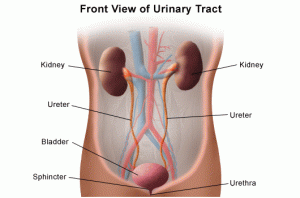
IN THE NEWS: Solutions for an overactive bladder Cut down-Caffeine in coffee, tea and soda can irritate the bladder and make the urge to go stronger, so cutting back may help. Drop the pounds- If you’re overweight or obese, losing weight can significantly improve your symptoms. “As the weight goes down, the pressure on the bladder goes down,” Ramin said. Do Kegels- “Performing Kegel exercises can reduce frequent urges to urinate,” said Dr. S. Adam Ramin, a urologist and urologic surgeon at Providence Saint John's Health Center in Santa Monica, Calif. and the founder and medical director of Urology Cancer Specialists in Los Angeles. So contract, hold and release, and shoot for 30 to 40 Kegels a day. Bladder retraining- You can actually condition your bladder to function properly by teaching yourself how to suppress the urge to urinate. So when you feel like you have to go, do a Kegel instead and then try to wait before going the bathroom. Estrogen cream- Thinning of the vaginal wall as a result of a drop in estrogen during menopause can cause irritation and inflammation of the bladder. An estrogen cream can help and is safe for women, even those who have had breast cancer, because it doesn’t get absorbed into the blood stream, Ramin said.

FUNNY BONE: If a lawyer and an IRS agent were both drowning, and you could only save one of them, would you: (1) go to lunch or (2) read the paper?
Visit our web sites: keefeclinic.com&facebook.com/keefeclinic


